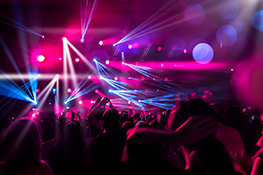Stage Lighting Calculation Simplified: A Step-by-Step Guide
Understanding the Basics: Illuminance, Lumen, and Lux
Before diving into complex calculations, let’s grasp fundamental concepts. Illuminance refers to the amount of light falling on a surface. It’s measured in lux (lx). Lumen (lm), on the other hand, represents the total amount of light emitted by a source. Understanding the relationship between lumens and lux is crucial for accurate lighting calculations. We’ll explore how the inverse square law impacts this relationship.
Calculating Lux Levels: The Inverse Square Law
The inverse square law dictates that illuminance decreases proportionally to the square of the distance from the light source. This means doubling the distance reduces the illuminance to one-quarter. We’ll provide practical examples and demonstrate how to use this law in your calculations, showing how to account for distance, lamp wattage, and beam angle to determine the lux level at a specific point on stage. We’ll also introduce the concept of light throw and its impact on lux calculations.
Factors Influencing Stage Lighting Calculations
Several factors influence the overall illumination on stage. These include:
- Lamp Wattage and Type:
- Fixture Efficiency:
- Reflector Design:
- Beam Angle and Spread:
- Light Absorption by Scenery and Costumes:
- Ambient Light Levels:
We’ll delve into each factor, explaining its impact on calculations and providing practical tips for optimizing your lighting design. This section will also cover the different types of stage lighting fixtures and their specific light output characteristics.
Step-by-Step Calculation Guide: A Practical Approach
This section will provide a step-by-step guide to calculating the required number of fixtures for achieving a desired lux level on stage. We’ll use real-world examples to illustrate the process, explaining each step clearly and concisely. The guide will incorporate practical formulas and easy-to-understand explanations, making even complex calculations manageable.
Using Lighting Design Software for Accurate Calculations
While manual calculations are valuable for understanding the underlying principles, professional lighting design software offers significant advantages. We’ll explore the benefits of using such software, highlighting its capabilities in visualizing lighting designs, automating calculations, and accurately predicting lux levels.
Optimizing Your Lighting Design for Energy Efficiency
Energy efficiency is a major concern in stage lighting. We’ll discuss strategies for optimizing your lighting design to reduce energy consumption without compromising on the quality of illumination. This will include discussing the use of LED lighting, dimming techniques, and smart lighting control systems. We will also explore strategies to balance aesthetic needs with energy conservation.
Troubleshooting Common Lighting Calculation Mistakes
Even experienced lighting designers sometimes make mistakes in calculations. This section will cover common errors and provide solutions, ensuring accuracy and efficiency in your lighting design process.
Conclusion: Mastering Stage Lighting Calculations
Mastering stage lighting calculations empowers you to create stunning and effective lighting designs. By understanding the underlying principles and applying the techniques outlined in this guide, you can achieve consistent, high-quality illumination for any stage production. Remember to always consider safety and best practices in your lighting setup.


 Auditorium Construction Services
Auditorium Construction Services 